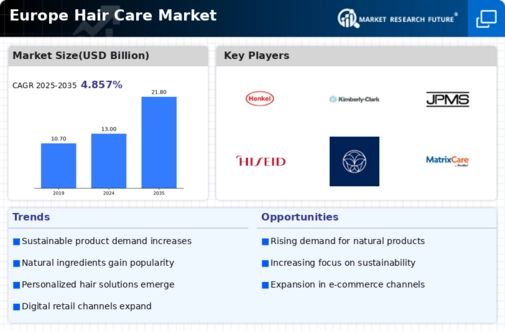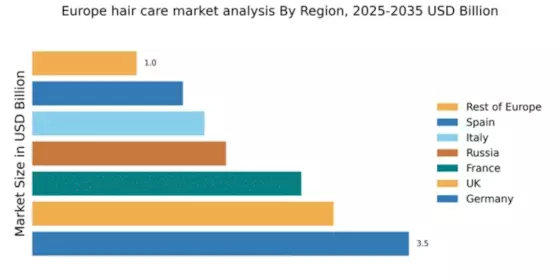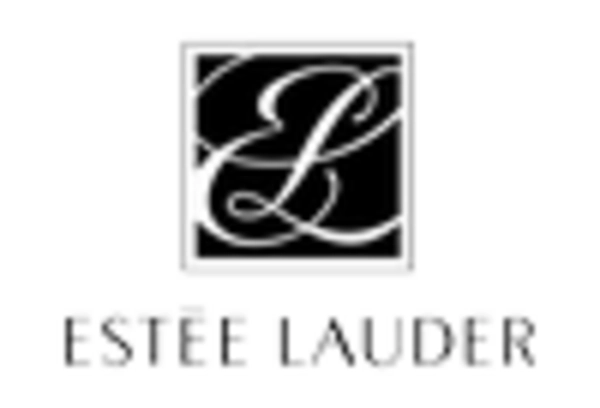The hair care market in Europe is characterized by a dynamic competitive landscape, driven by innovation, sustainability, and digital transformation. Major players such as L'Oreal (FR), Unilever (GB), and Procter & Gamble (US) are at the forefront, each adopting distinct strategies to enhance their market positioning. L'Oreal (FR) emphasizes innovation through its investment in research and development, focusing on personalized hair care solutions that cater to diverse consumer needs. Unilever (GB) has been actively pursuing sustainability initiatives, aiming to reduce its environmental footprint while expanding its product lines to include eco-friendly options. Procter & Gamble (US) leverages digital transformation, utilizing advanced analytics to better understand consumer preferences and optimize its marketing strategies. Collectively, these strategies contribute to a competitive environment that is increasingly focused on meeting consumer demands for quality, sustainability, and personalization.
Key business tactics within the market include localizing manufacturing and optimizing supply chains to enhance efficiency and responsiveness. The competitive structure appears moderately fragmented, with a mix of established brands and emerging players vying for market share. The influence of key players is substantial, as they set trends and standards that smaller companies often follow. This competitive dynamic fosters an environment where innovation and adaptability are crucial for success.
In October 2025, L'Oreal (FR) announced a partnership with a leading tech firm to develop AI-driven hair care solutions. This strategic move is likely to enhance L'Oreal's product offerings by integrating personalized recommendations based on individual hair types and conditions, thereby reinforcing its commitment to innovation. Such advancements may position L'Oreal as a leader in the personalized hair care segment, appealing to tech-savvy consumers.
In September 2025, Unilever (GB) launched a new line of biodegradable hair care products, reflecting its ongoing commitment to sustainability. This initiative not only aligns with growing consumer preferences for environmentally friendly products but also strengthens Unilever's brand image as a responsible corporate entity. The introduction of these products could potentially capture a significant share of the eco-conscious market segment, further solidifying Unilever's competitive edge.
In August 2025, Procter & Gamble (US) expanded its digital marketing efforts by implementing a new data analytics platform aimed at enhancing customer engagement. This strategic action is expected to provide deeper insights into consumer behavior, allowing Procter & Gamble to tailor its marketing strategies more effectively. By leveraging data analytics, the company may improve its product positioning and increase customer loyalty, which is essential in a competitive market.
As of November 2025, current trends in the hair care market include a pronounced shift towards digitalization, sustainability, and the integration of AI technologies. Strategic alliances among companies are increasingly shaping the competitive landscape, fostering innovation and collaboration. The evolution of competitive differentiation appears to be moving away from price-based competition towards a focus on innovation, technology, and supply chain reliability. This shift suggests that companies that prioritize these aspects may be better positioned to thrive in the future.


















Leave a Comment